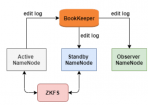每天一分钟,带你读遍机器人顶级会议文章
标题:Object Proposal Algorithms in the Wild: Are They Generalizable to Robot Perception?
作者:Darren M. Chan and Laurel D. Riek
来源:2019 IEEE/RSJ International Conference on Intelligent Robots and Systems (IROS)
编译:张健
审核:黄思宇,孙钦
这是泡泡一分钟推送的第 537 篇文章,欢迎个人转发朋友圈;其他机构或自媒体如需转载,后台留言申请授权
摘要
最近在计算机视觉领域出现的目标建议算法显示出解决机器人领域困难问题的巨大希望,如目标发现和显著目标检测。然而,很难确定这些算法在真实世界机器人视觉应用中的实际执行情况,因为标准评估协议使用的数据集不能充分考虑真实世界的噪声(运动模糊、遮挡等)。
我们使用来自机器人界的自然数据集评估了几种最新的目标建议算法,发现所有算法的性能都大幅下降。这表明,许多目标建议算法并不像计算机视觉文献所说的那样具有普遍性,这可能会对它们如何应用于机器人学产生重大影响。我们还研究了每种算法如何受到现实世界机器人视觉挑战的影响,包括变亮度、gamma校正、高斯模糊和高斯噪声。
我们的研究结果揭示了目标建议算法的某些弱点,这些弱点可以用来衡量它们如何适用于不同的机器人应用。我们的目的是,这项工作将激励未来研究如何为机器人界设计更灵活和健壮的目标建议算法。

图1。目标建议算法:窗口评分(左)和分割(右)。
图2。我们评估中使用的三个数据集的瓶子样本图像:PASCAL、B3DO和RGBDMV。

图3。来自PASCAL+的示例图像,描绘了从上到下以行显示的扰动,从左到右显示的各种量级。

图4。Recall vs. IoU and Recall vs. # Proposals.
图5。AUC vs. # Proposals on the PASCAL (left), B3DO (center), and RGBD-MV (right).
Abstract
The recent emergence of object proposal algorithms in the computer vision community shows great promise to addressing difficult problems in robotic such as object discovery and salient object detection. However, it is difficult to determine how these algorithms actually perform for real-world robot vision applications, because the standard evaluation protocol uses datasets which do not adequately account for real-world noise (motion blur, occlusion, etc.). We evaluated several state-of-the-art object proposal algorithms using naturalistic datasets from the robotics community, and found a substantial performance drop across all algorithms. This suggests that many object proposal algorithms are not as generalizable as the computer vision literature purports, which can have a significant impact on how they are applied to robotics. We also conducted a study on how each algorithm is influenced by specific kinds of real-world robot vision challenges, including variable brightness, gamma correction, Gaussian blur, and Gaussian noise. Our results provide insight into certain weaknesses of object proposal algorithms, which can be used to gauge how they might be suitable for different robotics applications. It is our intent that this work will motivate future research about how to design more flexible and robust object proposal algorithms for the robotics community.














